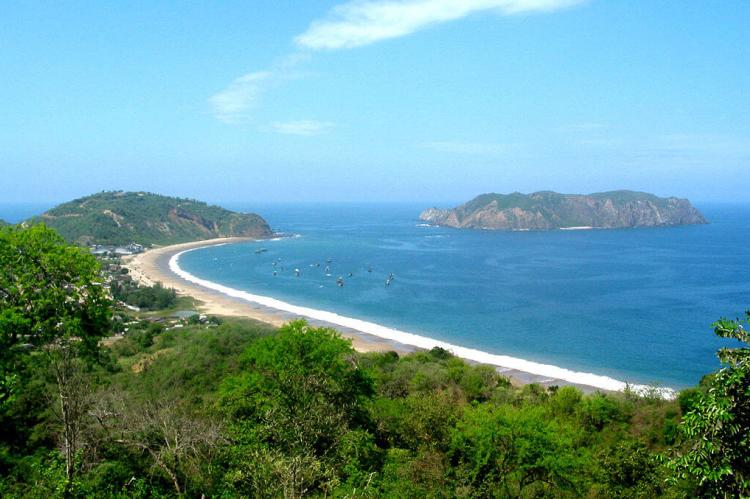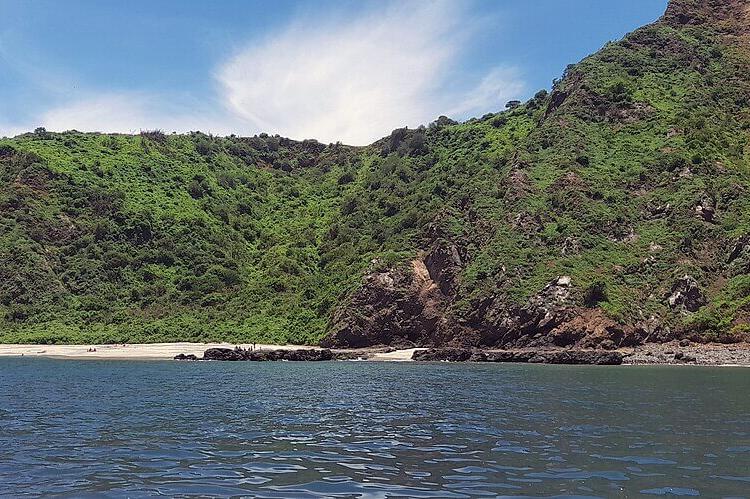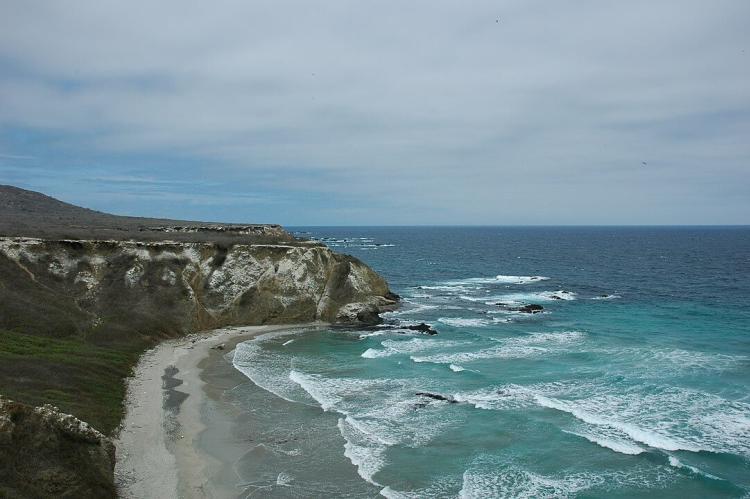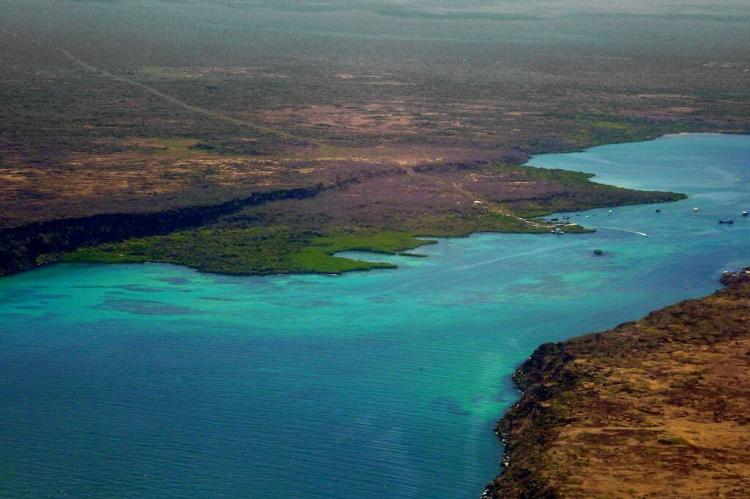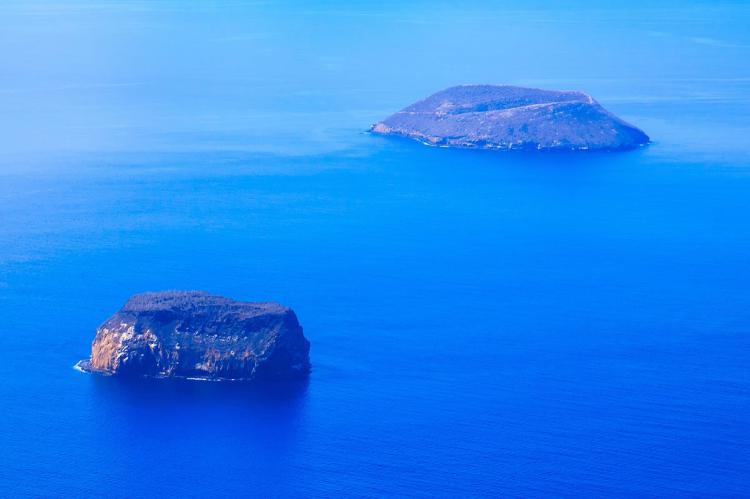Islands and Archipelagos of Ecuador
Ecuador, renowned for its biodiversity and cultural heritage, boasts a remarkable collection of islands that dot its coastal waters. From the Pacific Ocean's azure depths to the Galápagos Islands' pristine shores, each island offers a unique mosaic of ecosystems, cultures, and experiences.
Islands and Archipelagos of Ecuador
Ecuador, renowned for its rich biodiversity and vibrant cultural heritage, boasts a remarkable collection of islands and archipelagos that dot its coastal waters. From the azure depths of the Pacific Ocean to the pristine shores of the Galápagos Islands, each island in Ecuador offers a unique mosaic of ecosystems, cultures, and experiences, reflecting the country's diverse natural wonders and cultural significance.
Ecuador's islands form a mosaic of ecosystems, each contributing to the country's unparalleled biodiversity and cultural diversity. From the lush rainforests of the Amazonian islands to the volcanic landscapes of the Galápagos, these islands offer a glimpse into Ecuador's rich natural heritage.
Among Ecuador's islands, the Galápagos Islands are a global symbol of conservation and ecological resilience. Renowned for their unique biodiversity and role in shaping Charles Darwin's theory of evolution, the Galápagos serve as a living laboratory for studying evolutionary biology. Here, visitors can witness the remarkable adaptations of endemic species, from giant tortoises to marine iguanas, and explore pristine ecosystems that have remained largely untouched by human influence.
Archipelagos and Island Groups
Galápagos Islands (Archipiélago de Colón): The Galápagos Islands are perhaps the most famous of Ecuador's archipelagos. Located approximately 1,000 km (620 mi) off the mainland in the Pacific Ocean, these islands are known for their incredible biodiversity and role in Charles Darwin's theory of evolution. The Galápagos Islands are a UNESCO World Heritage Site and a National Park, Marine Reserve, and Biosphere Reserve. The archipelago consists of 18 main islands and several smaller ones, each with distinct species of plants and animals, many of which are found nowhere else on Earth.
Jambelí Islands (Archipiélago de Jambelí): Located off the province of El Oro in southern Ecuador, these islands are known for their mangrove forests, biodiversity, and shrimp farming. The islands are a popular destination for ecotourism.
Notable Islands
Isla de la Plata: Also known as the "Silver Island," Isla de la Plata is sometimes called the "Poor Man's Galápagos" due to its similar wildlife and ecosystem. It is located off the coast of mainland Ecuador near Puerto López. The island is part of Machalilla National Park and is known for its birdwatching opportunities, especially during the nesting season of various species.
Santay Island (Isla Santay): This island is located in the Guayas River, about 20 km (12 mi) from Guayaquil. It is a popular destination for swimming, fishing, and bird watching. Isla Santay is also home to various wildlife, including monkeys, iguanas, and crocodiles.
Salango Island (Isla Salango): Salango Island is located off the coast of Manabí Province, near Salango. It is known for its beautiful beaches and its snorkeling and diving spots. Salango Island is also home to wildlife, including sea turtles, dolphins, and whales.
Puná Island (Isla Puná): This island is located in the Gulf of Guayaquil, about 50 km (31 mi) from Guayaquil. It is the largest island in Ecuador, with an area of 1,300 sq km (502 sq mi). Isla Puná is known for its mangrove forests and its salt flats. The island is also home to various wildlife, including flamingos, pelicans, and iguanas.
Muisine Island (Isla Muisne): Located off the northern coast of Ecuador in the province of Esmeraldas, Isla Muisne is known for its beautiful beaches and palm trees. It's a popular destination for relaxation, water sports, and beach activities.
Corazón Island (Isla Corazón): Situated near the town of Bahía de Caráquez, Isla Corazón is an ecological reserve known for its mangrove forests, birdwatching opportunities, and environmental conservation efforts. The island is accessible by boat and offers guided tours.
Jambelí Island (Isla Jambelí): Situated off the coast of El Oro Province, Isla Jambelí is known for its mangrove ecosystems, biodiversity, and shrimp farming. It offers opportunities for ecotourism, birdwatching, and exploring the natural environment.
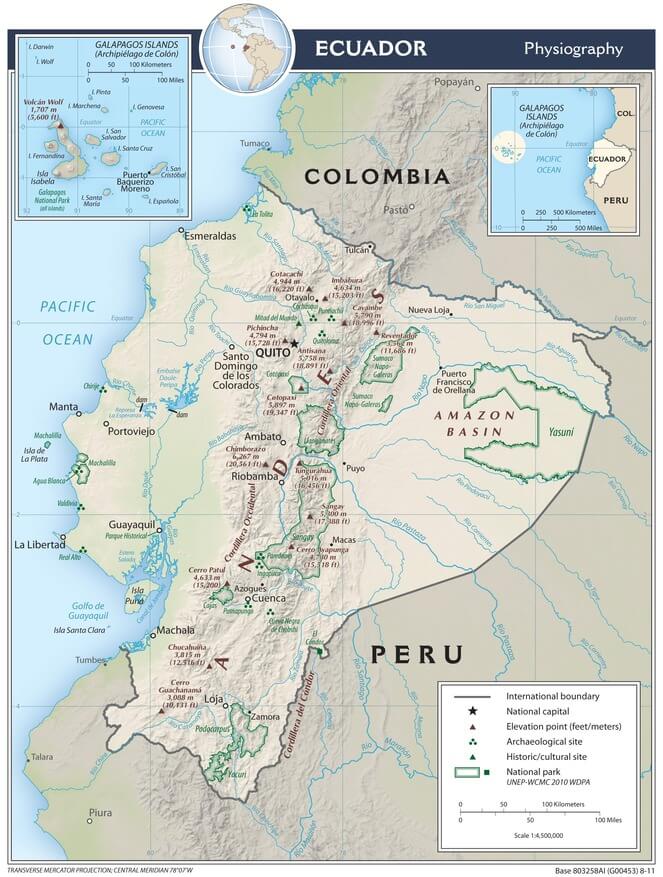
Ecuador physiographic map.
